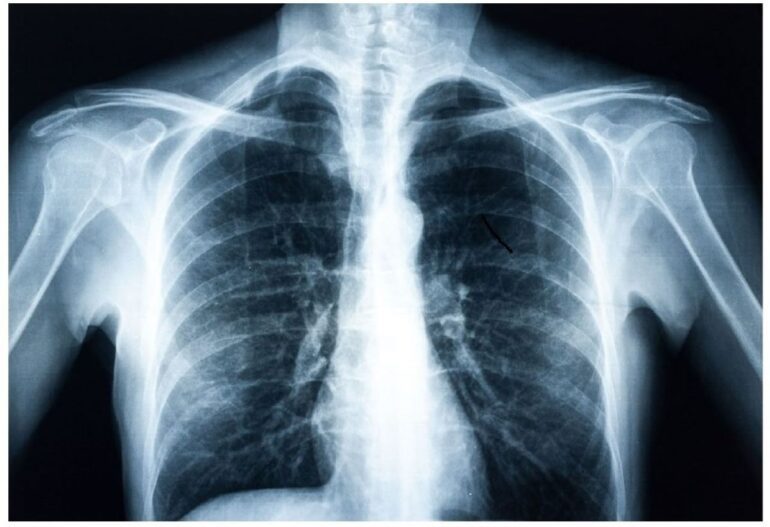TL;DR:
- CSIRO’s research enhances AI diagnosis of heart and lung conditions through X-ray analysis.
- The study compares AI models and identifies strategies to improve chest X-ray report accuracy.
- Dr. Aaron Nicolson emphasizes AI’s potential to ease clinician workload and enhance patient care.
- The research introduces “warm starting” AI models for chest X-ray reporting.
- CSIRO’s imaging team achieves a remarkable 26.9% relative improvement in reporting accuracy.
- Radiologist Dr. Doug Anderson highlights the potential of AI to alleviate clinician burnout.
- The AI model shows promise in identifying some pathologies but requires further refinement.
- Future research aims to enhance the AI model’s accuracy in identifying a broader range of pathologies.
Main AI News:
Cutting-edge research from CSIRO, Australia’s premier national science agency, has paved the way for significant enhancements in artificial intelligence (AI) diagnosis of heart and lung conditions through X-ray analysis. In a groundbreaking study recently featured in our esteemed publication, scientists hailing from CSIRO’s Australian e-Health Research Centre (AEHRC) embarked on a mission to evaluate and enhance the diagnostic precision of automated chest X-ray interpretation and reporting by scrutinizing various AI models.
Dr. Aaron Nicolson, a distinguished CSIRO Research Scientist and the lead author of this paradigm-shifting research, emphasized the potential of these findings to revolutionize healthcare services. “AI holds the promise of elevating the quality of healthcare services, specifically by alleviating the burden on healthcare professionals and streamlining the current non-automated procedures,” Dr. Nicolson affirmed. “The automation of X-ray report generation has the potential to mitigate clinician burnout and afford them the opportunity to deliver more comprehensive patient care. This research underscores the future prospects of empowering clinicians with advanced AI support.”
The prevailing methodology for AI-generated X-ray reports employs an “encoder” to interpret chest X-ray images and a “decoder” to produce the corresponding report. Until now, the choice of encoder and decoder for automated chest X-ray report generation had not been subjected to systematic research and evaluation. Moreover, the potential to transfer knowledge from one task, such as classifying natural images or generating Wikipedia articles, to enhance automated reporting – a practice known as “warm starting” an AI model – remained largely unexplored.
In a pioneering feat, the CSIRO AEHRC’s imaging team conducted extensive testing of various encoders and decoders, while also assessing the efficacy of different warm-starting strategies for chest X-ray report generation. The results were nothing short of astounding, revealing that the judicious combination of an encoder and decoder, coupled with the strategic application of the warm-starting technique, yielded an impressive 26.9% relative improvement in automated image reporting accuracy. The evaluation was conducted by benchmarking against human radiologist reports, thereby validating the tangible benefits of this technological leap.
Dr. Doug Anderson, a respected radiologist from Monash Medicine, Victoria, underscored the urgency of addressing clinician burnout and workload management in the medical field. “Clinician burnout poses a significant risk to mental health, particularly among radiologists who contend with heavy workloads and rigorous clinical documentation demands,” Dr. Anderson explained. “The growing reliance on imaging for diagnostic purposes, coupled with a shortage of radiologists, has created an unsustainable situation. The integration of artificial intelligence to assist in interpreting chest X-rays and generating documentation presents an exciting potential solution to this challenge.“
While the AI model consistently identifies certain pathologies, such as pleural effusion, it is important to note that it still faces challenges in accurately identifying other pathologies, such as lung lesions. Consequently, the next phase of research will focus on refining the AI model to ensure its accuracy in identifying a wider range of pathologies. These critical advancements are essential prerequisites before deploying this transformative technology in clinical settings.
In conclusion, the CSIRO’s groundbreaking research in the realm of AI-driven chest X-ray diagnostics heralds a new era of healthcare excellence, with the potential to alleviate clinician burnout, enhance patient care, and ultimately save lives. Stay tuned as we continue to explore the remarkable developments in the intersection of artificial intelligence and medical science.
Conclusion:
CSIRO’s groundbreaking research in AI-driven chest X-ray diagnostics has the potential to revolutionize the healthcare market. By reducing clinician burnout, streamlining reporting, and improving patient care, this technology promises to enhance the efficiency and effectiveness of healthcare services, creating significant opportunities for innovation and growth in the healthcare industry.

